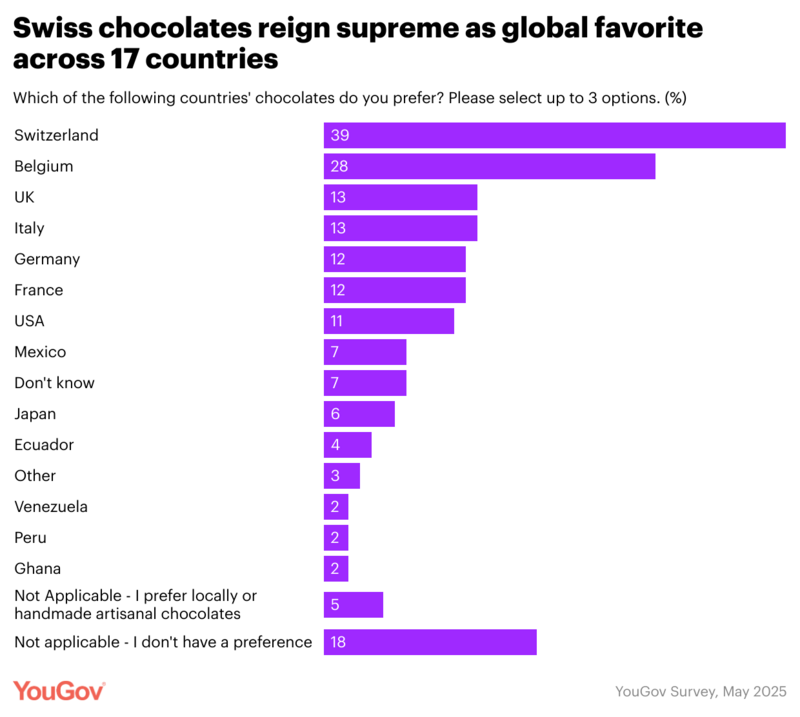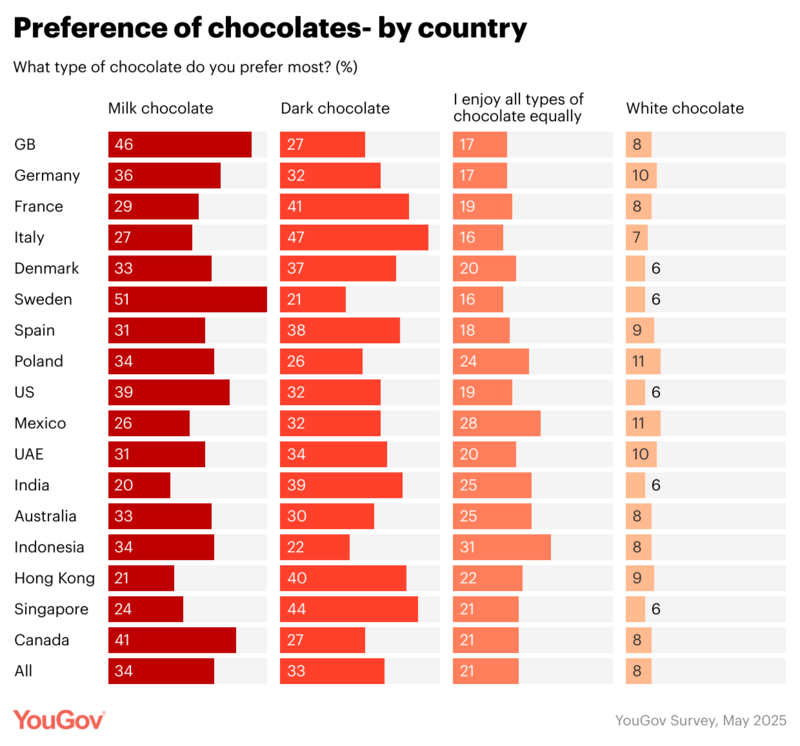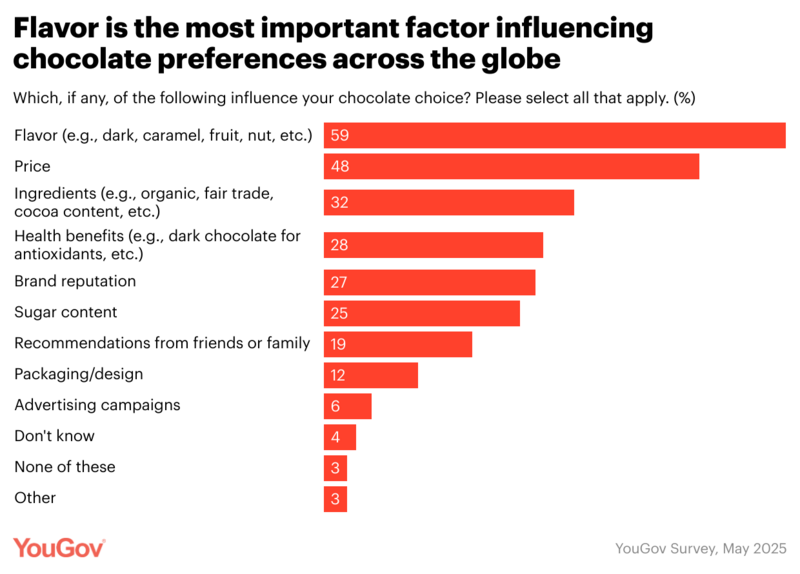
Italians, Canadians, and Spaniards emerge as the biggest fans; milk vs. dark chocolate preference reveals generational divide

ZURICH, July 23, 2025 – A new global survey by YouGov has confirmed Switzerland’s long-held reputation as the chocolate capital of the world. The study, conducted across 17 countries, reveals that 39% of respondents ranked Swiss chocolate as their top choice, followed by Belgian chocolates (28%), and British and Italian varieties (13% each).

German, French, and American chocolates trail closely, preferred by 12%, 12%, and 11% of respondents, respectively. Surprisingly, only 5% of consumers favour local or artisanal handmade chocolates, while 18% said they don’t have a strong preference. Women were slightly more likely than men to express neutrality (20% vs. 17%).

Milk vs. Dark Chocolate: A Global Tie
When it comes to types of chocolate, milk chocolate (34%) and dark chocolate (33%) are almost equally popular globally. 21% of consumers said they enjoy all types equally, while white chocolate remains a niche favourite.
Women lean more towards milk chocolate (36% vs. 32% for men)
Dark chocolate enjoys equal popularity among men and women
Gen Z prefers milk chocolate (38%) and shows a higher liking for white chocolate (10%), whereas Baby Boomers (40%) and Gen X (35%) favour dark chocolate
Country-Wise Chocolate Preferences
Taste buds vary widely around the world:
Milk chocolate reigns supreme in Sweden (51%), followed by the UK (46%), Canada (41%), and the US (39%)
Dark chocolate is most popular in Italy (47%) and Singapore (44%), followed by France (41%), Hong Kong (40%), and India (39%)
Indonesians (31%) are most likely to enjoy all types, followed by Mexicans (28%), and Indians and Australians (25% each)
When it comes to brands:
Swiss chocolates are the top pick in Italy (51%), Canada (50%), and Spain (50%)
Belgian chocolates rank high in Canada (41%), Singapore (38%), and Hong Kong (36%)
What Drives Chocolate Choices?
Across all surveyed regions, flavour (59%) remains the most important factor, followed by price (48%), ingredients (32%), health benefits (28%), and sugar content (25%). Brand reputation influences 27% of buyers, while 20% rely on recommendations from friends and family.
This survey underscores how Swiss chocolate continues to hold a premium image globally, while taste preferences remain highly gendered, generational, and culturally influenced.





























